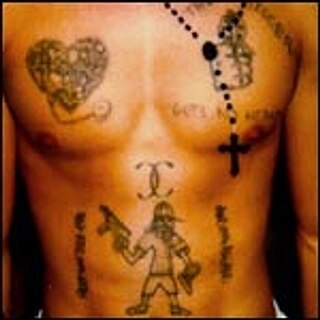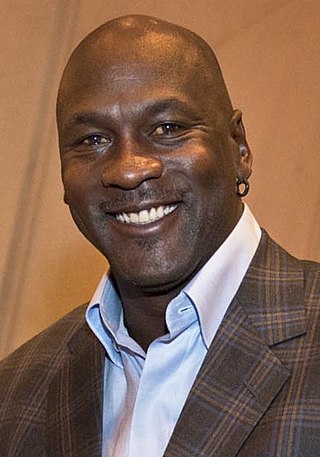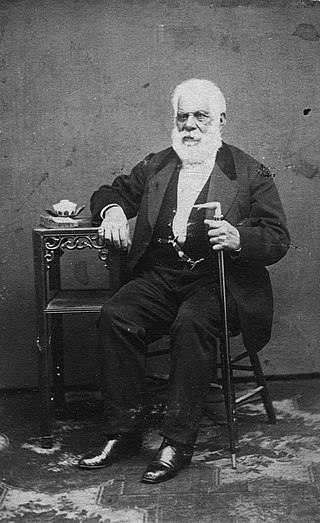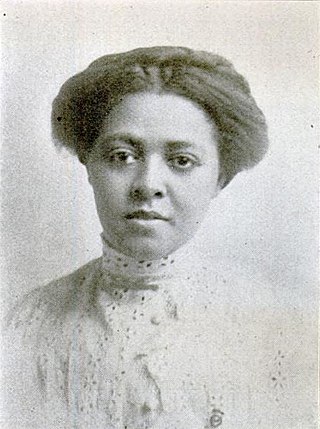
Rotary International is one of the largest service organizations in the world. The mission of Rotary, as stated on its website, is to "provide service to others, promote integrity, and advance world understanding, goodwill, and peace through [the] fellowship of business, professional, and community leaders". It is a non-political and non-religious organization. Membership is by application or invitation and based on various social factors. There are over 46,000 member clubs worldwide, with a membership of 1.4 million individuals, known as Rotary members.

Paul Revere Williams, FAIA was an American architect based in Los Angeles, California. He practiced mostly in Southern California and designed the homes of numerous celebrities, including Frank Sinatra, Lucille Ball and Desi Arnaz, Lon Chaney, Barbara Stanwyck and Charles Correll. He also designed many public and private buildings.

Bessie Griffin was an American gospel singer. From junior high into the late 1940s, she sang with the Southern Harps, who were better known later as the Southern Revivalists of New Orleans, then performed with The Caravans for a year and toured with W. Herbert Brewster Jr. Mentored by Mahalia Jackson, she moved to Chicago in the early 1950s and then relocated to Los Angeles at the end of the decade. She performed in theaters and night clubs, and appeared on popular televisions shows like The Ed Sullivan Show and The Dinah Shore Show.
James Harris is an American communist politician and member of the National Committee of the Socialist Workers Party. He was the party's candidate for President of the United States in 1996, receiving 8,463 votes, and again in 2000, receiving 7,378 votes. Harris also served as an alternate candidate for Róger Calero in 2004 and 2008 in states where Calero could not qualify for the ballot due to being born in Nicaragua. More recently Harris was the SWP candidate in the 2009 Los Angeles mayoral election, receiving 2,057 votes (0.89%).

Biddy Mason was an African-American nurse and a Californian real estate entrepreneur and philanthropist. She was one of the founders of the First African Methodist Episcopal Church in Los Angeles, California. Enslaved upon birth, she developed a variety of skills and developed knowledge of medicine, child care, and livestock care. A California court granted her and her daughter’s freedom in 1856.

The Crips are an alliance of street gangs that is based in the coastal regions of Southern California. Founded in Los Angeles, California, in 1969, mainly by Raymond Washington and Stanley Williams, the Crips were initially a single alliance between two autonomous gangs; it is now a loosely connected network of individual "sets", often engaged in open warfare with one another. Traditionally, since around 1973, its members have worn blue clothing.

The Harlem Renaissance was an intellectual and cultural revival of African American music, dance, art, fashion, literature, theater, politics and scholarship centered in Harlem, Manhattan, New York City, spanning the 1920s and 1930s. At the time, it was known as the "New Negro Movement", named after The New Negro, a 1925 anthology edited by Alain Locke. The movement also included the new African American cultural expressions across the urban areas in the Northeast and Midwest United States affected by a renewed militancy in the general struggle for civil rights, combined with the Great Migration of African American workers fleeing the racist conditions of the Jim Crow Deep South, as Harlem was the final destination of the largest number of those who migrated north.

The Ballroom Scene is an African-American and Latino underground LGBTQ+ subculture that originated in New York City. Beginning in the late 20th century, Black and Latino drag queens organized their own pageants in opposition to racism experienced in established drag queen pageant circuits. Though racially integrated for the participants, the judges of these circuits were mostly white people. While the initial establishment of Ballroom mimicked these drag queen pageants, the inclusion of gay men and trans women would transform the Ballroom scene into what it is today: a multitude of categories in which all LGBTQ+ people may participate. Attendees "walk" these categories for trophies and cash prizes. Most participants in Ballroom belong to groups known as "houses", where chosen families of friends form relationships and communities separate from their families of origin, from which they may be estranged.
African Americans in Omaha, Nebraska are central to the development and growth of the 43rd largest city in the United States. Black people are first recorded arriving in the area that became the city when York came through in 1804 with the Lewis and Clark expedition and the residence of Jean Baptiste Point du Sable who lived at Fort Lisa for an extended period in 1810. There were also enslaved Black people at the Church of Latter Day Saints Winter Quarters in 1846. The first free Black settler in the city arrived in 1854, the year the city was incorporated.

The African-American upper class is a social class that consists of African-American individuals who have high disposable incomes and high net worth. The group includes highly paid white-collar professionals such as academics, engineers, lawyers, accountants, doctors, politicians, business executives, venture capitalists, CEOs, celebrities, entertainers, entrepreneurs and heirs. This social class, sometimes referred to as the black upper class, the black upper middle class or black elite, represents 12 percent of the total black population in the United States.
Betty Hill (1876–1960) was an early 20th-century civil rights and women’s rights leader. Her efforts were significant in making certain that segregation and racial discrimination were unable to gain a foothold in Southern California as they did in the South.

South Los Angeles, also known as South Central Los Angeles or simply South Central, is a region in southwestern Los Angeles County, lying mostly within the city limits of Los Angeles, south of downtown. It is "defined on Los Angeles city maps as a 16-square-mile rectangle with two prongs at the south end.” In 2003, the Los Angeles City Council renamed this area "South Los Angeles".

William Jenifer Powell was an American engineer, soldier, civil aviator and writer who is credited with promoting aviation among the African-American community. Along with Bessie Coleman and James Banning, he is recognized as a pioneer aviator and a civil rights activist. Powell was optimistic about the prospects of African Americans in aviation, and believed that their involvement in the industry would help end racial prejudice at a time of widespread segregation under the Jim Crow laws.
Ida B. Kinney was an African-American civil rights activist.

The History of African Americans in Los Angeles includes participation in the culture, education, and politics of the city of Los Angeles, California, United States.
The African-American LGBT community, otherwise referred to as the Black American LGBT community, is part of the overall LGBT culture and overall African-American culture. The initialism LGBT stands for lesbian, gay, bisexual, and transgender. A landmark event for the LGBT community, and the Black LGBT community in particular, was the Stonewall uprising in 1969, in New York City's Greenwich Village, where Black activists including Stormé DeLarverie and Marsha P. Johnson played key roles in the events.

The woman's club movement was a social movement that took place throughout the United States that established the idea that women had a moral duty and responsibility to transform public policy. While women's organizations had always been a part of United States history, it was not until the Progressive era that it came to be considered a movement. The first wave of the club movement during the progressive era was started by white, middle-class, Protestant women, and a second phase was led by African-American women.

Bessie Bruington Burke was the first African American teacher and principal hired in the Los Angeles public school system.

Margaret Briggs Gregory Hawkins, worked as a schoolteacher and later became known for her activism on behalf of African Americans and women. She was inducted into the Maryland Women's Hall of Fame in 2021.














